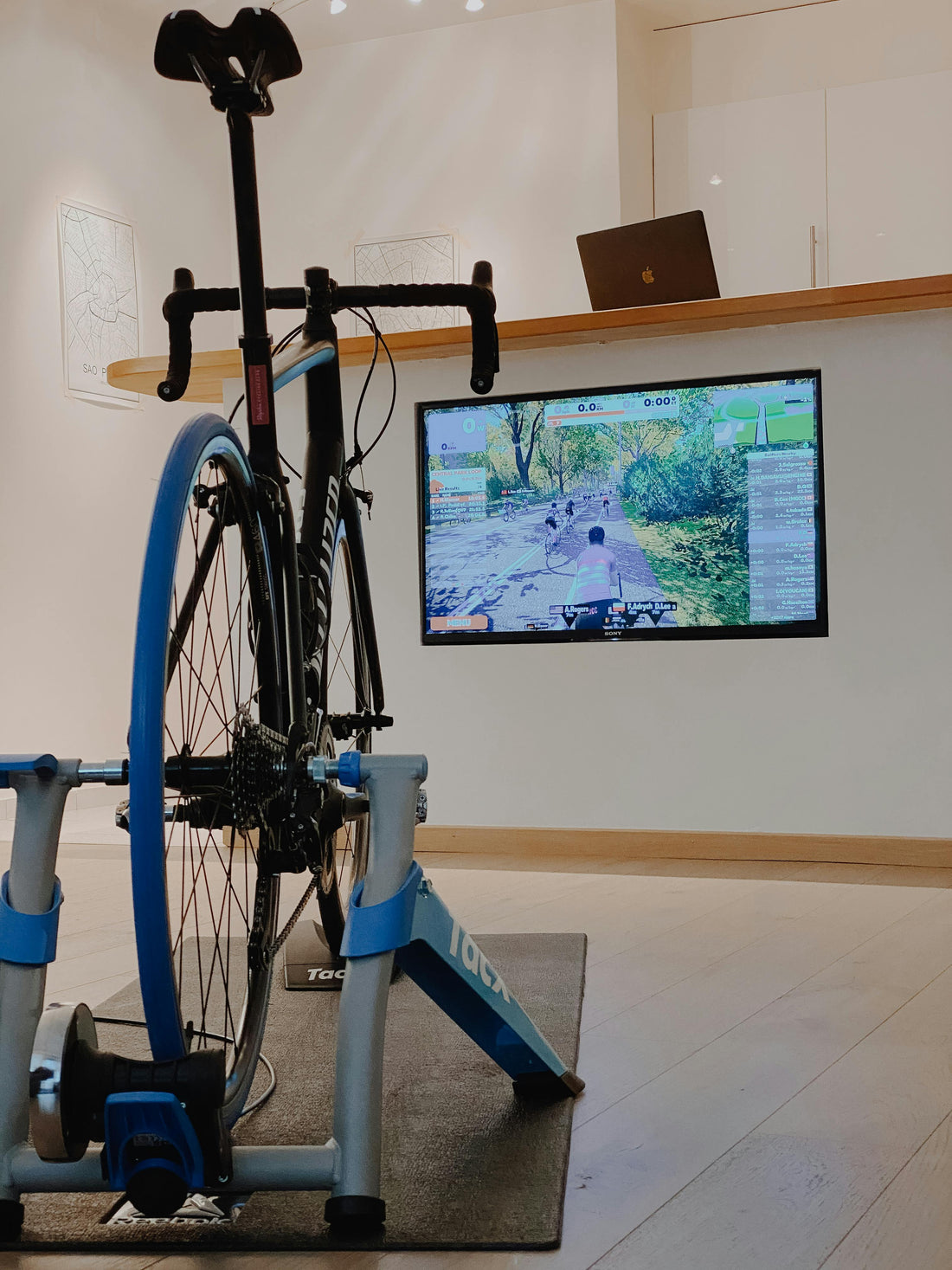
Motivation Station: Ride the Alps from Home
Share
Ever wished you could feel the thrill of a mountain bike race without leaving your living room?
Here’s a simple setup that works surprisingly well without having to visit the gym. Park your stationary bike in front of a large screen, find a YouTube video of a downhill race in the Alps filmed in first-person view, and pedal along as if you’re riding it yourself. Because the camera is mounted on the rider’s helmet, your brain quickly slips into the illusion swept into the scenery, motion, and adrenaline.
But what makes this visual trick so motivating? Science gives us some clear answers.
The Power of Immersion
Even without full VR headsets, scenic visuals can create a sense of presence that enhances exercise. Research comparing high immersive head-mounted displays with simpler setups found that even low-tech options, like cycling footage on a regular screen, significantly increased enjoyment and engagement across age groups including older adults (Matallaoui et al., 2021).
The Brain on Positive Images
A PET/MRI study showed that viewing emotionally positive images triggers serotonin release in the visual cortex the brain’s hub for processing sight (Beliveau et al., 2020). Serotonin is a “feel-good” chemical strongly tied to mood regulation, explaining why uplifting visuals make workouts feel better.
Real vs. Imagined Experiences
fMRI studies reveal that the brain activates in similar ways when we vividly imagine something as when we actually see it (Kosslyn et al., 2004). That’s why helmet-cam cycling footage feels so real: your brain is processing it as though you’re really on the ride.
Movement + Visuals = Motivation Multiplier
Exercise on its own releases endorphins, the natural “high” linked to running, cycling, and other activities (Saanijoki et al., 2018). When paired with immersive visuals, this effect intensifies workouts feel easier, more fun, and often last longer without noticing the time pass.
Motivation Feels Lighter
Research also shows that immersive visuals during exercise boost intrinsic motivation and enjoyment, while reducing perceived exertion (Matallaoui et al., 2021). In other words, the workout feels less tiring, even though you’re doing the same amount of effort.
Older Adults & Virtual Cycling
Immersive cycling isn’t just for younger fitness enthusiasts. The BikeAround system, which combines stationary bikes with Google Street View, was well tolerated by older adults, boosting enjoyment and supporting sustained activity (Larsen et al., 2019). Longer-term effects are still being studied, but early results are promising.
Why This Matters for Your Motivation Station
Your home setup a static bike paired with helmet view footage taps into the same principles as VR cycling research. This approach can:
Increase workout enjoyment, making exercise feel fun and effortless.
Boost motivation and consistency, encouraging longer, more frequent sessions.
Provide mental escape and sensory stimulation that ordinary workouts may lack.
Even without a VR headset, the sense of “being there” is strong enough to make a real difference to how you feel and how long you ride.
Ready to Try It?
Find a good helmet-cam downhill mountain bike video on YouTube the more scenic, the better. If you want a very exciting downhill ride I can recommend Killian Bron Megavalange 2025. This video is very immersive so ensure you are ready and steady! If you prefer a slower gentle experience there is a wealth of videos on YouTube to download.
Video credit: Kilian Bron / YouTube. This video is embedded from YouTube for educational and motivational purposes only. All rights remain with the original creator.
Position your bike in front of a large screen.
Pedal along, letting the visuals distract from effort and elevate enjoyment.
Notice if you end up riding longer, pushing harder or just smiling more.
As we age, the challenge isn’t a lack of ability it’s finding ways to stay moving and excited. Immersive visuals are a brilliant tool: they’ll bring energy, motivation, and a compelling sense of presence to your workouts. Let’s turn the ordinary into extraordinary right from your home.
References
Beliveau, V., Ganz, M., Feng, L., Ozenne, B., Højgaard, L., Fisher, P. M., & Knudsen, G. M. (2020). Cortical serotonin release during exposure to positive emotional stimuli. NeuroImage, 204, 116248. https://doi.org/10.1016/j.neuroimage.2019.116248
Kosslyn, S. M., Ganis, G., & Thompson, W. L. (2004). Neural foundations of imagery. Nature Reviews Neuroscience, 2(9), 635–642. https://doi.org/10.1038/nrn1492
Larsen, J. E., Pedersen, I., & Nielsen, C. V. (2019). BikeAround: An immersive VR-based exercise system for older adults. Gerontology & Geriatric Medicine, 5, 1–9. https://doi.org/10.1177/2333721419877373
Matallaoui, A., Koivisto, J., & Hamari, J. (2021). Immersion in exergames: The effect of visual realism on exercise motivation and enjoyment. Computers in Human Behavior, 124, 106921. https://doi.org/10.1016/j.chb.2021.106921
Saanijoki, T., Nummenmaa, L., Eskelinen, J. J., Savolainen, A. M., Vahlberg, T., Kalliokoski, K. K., & Hannukainen, J. C. (2018). Affective responses to repeated sessions of aerobic exercise — measuring the time course of changes. Frontiers in Psychology, 9, 219. https://doi.org/10.3389/fpsyg.2018.00219
Disclaimer: This blog post is for informational and educational purposes only and is not intended as medical advice. Always consult your doctor or qualified health professional before making changes to your diet, exercise, or health routines.